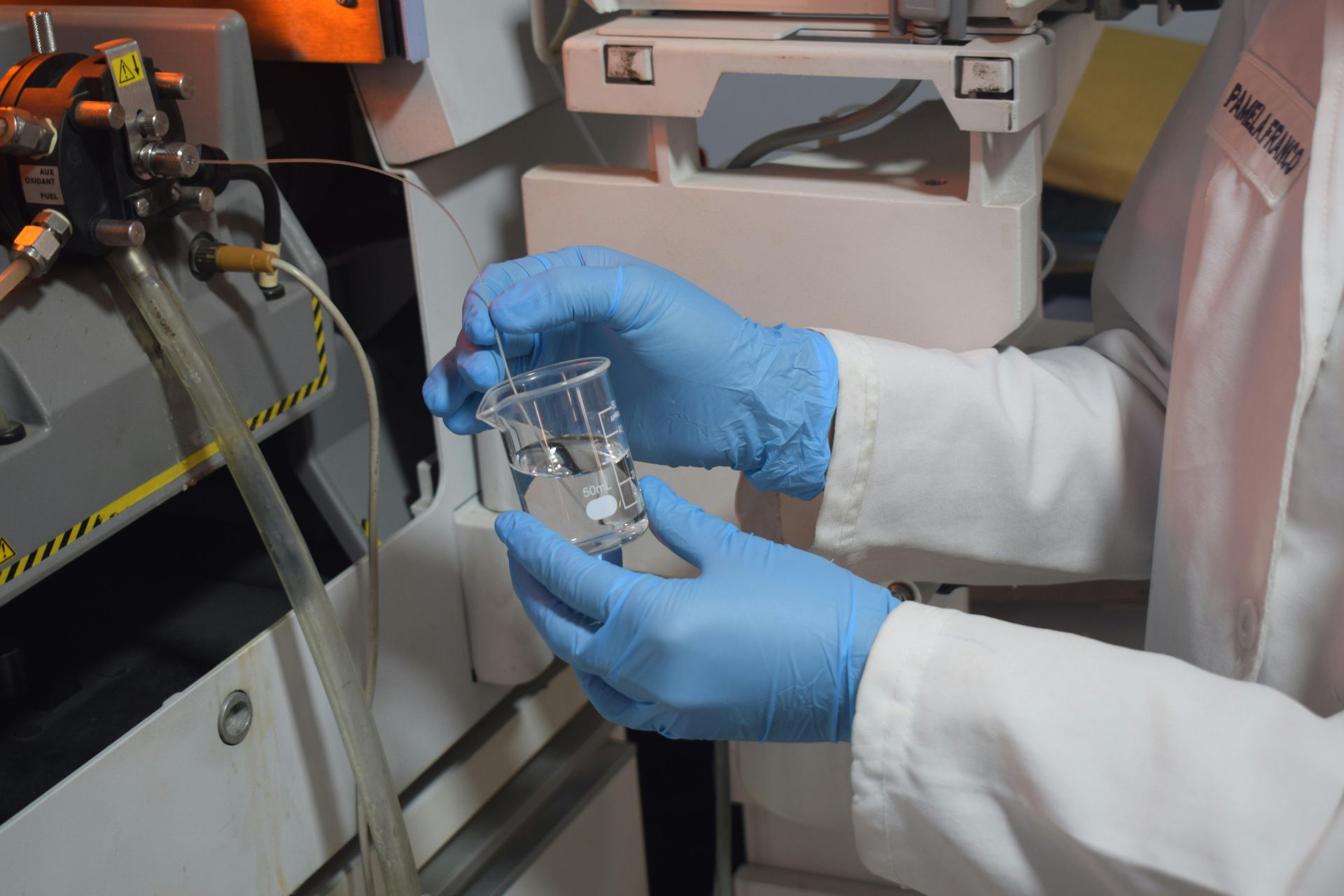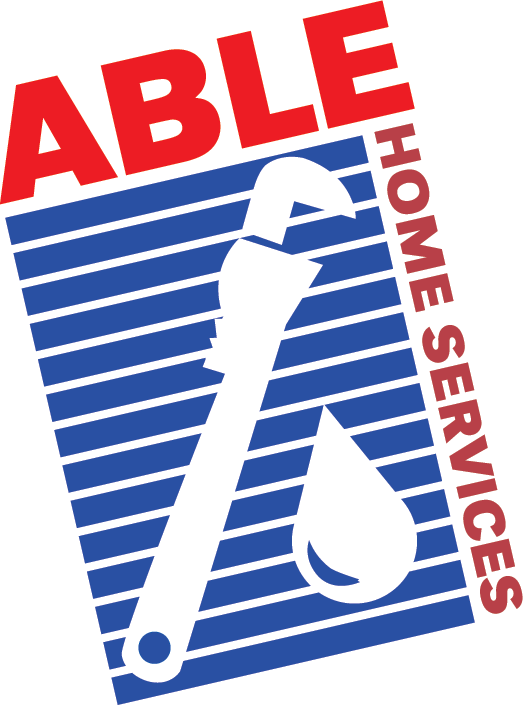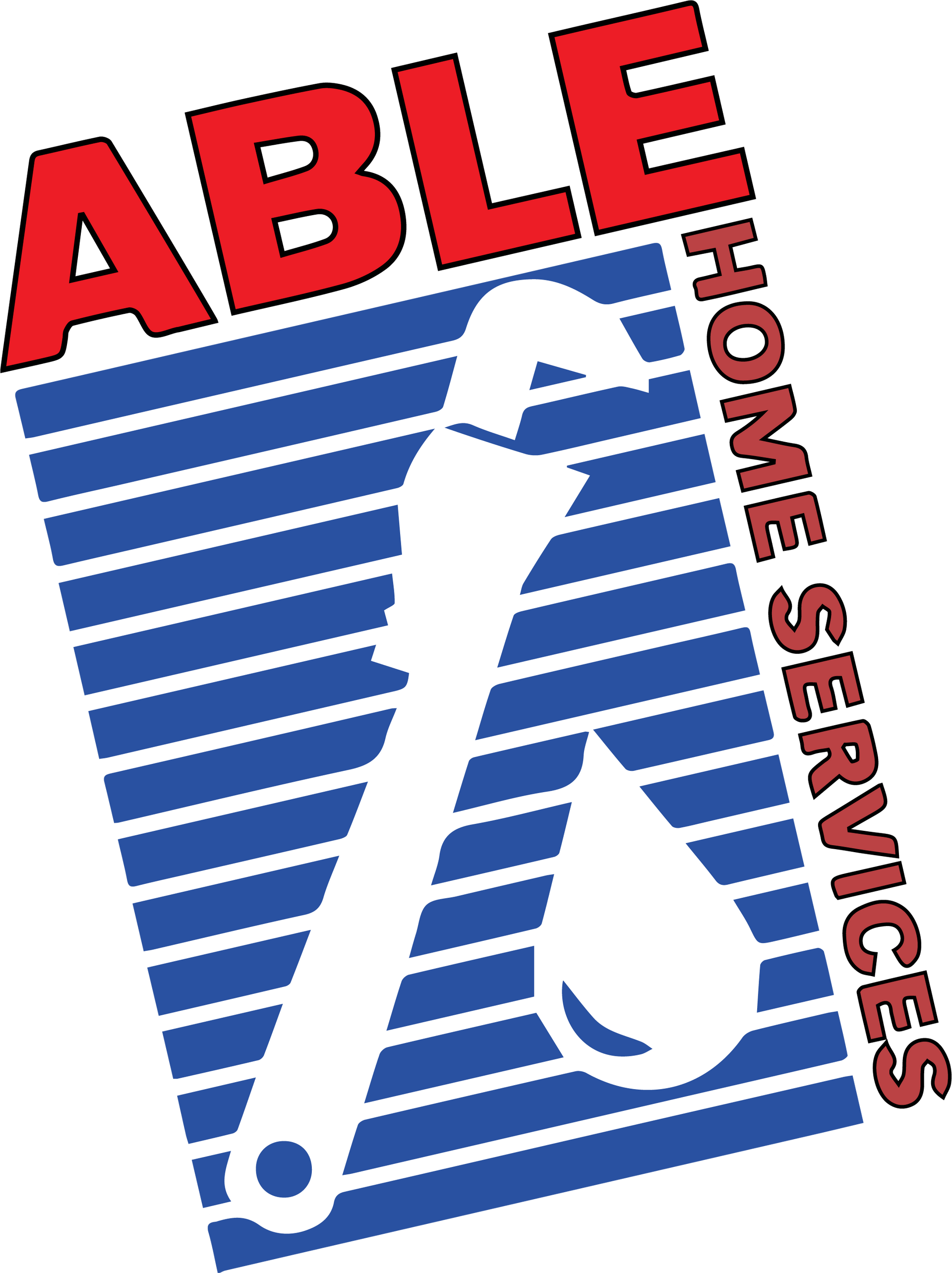Water Treatment
Quick Category Links
In-Home Water Treatment? We've Got You Covered!
We've made sure you can find all the information you are looking for when it comes to treating the water in your home. Follow any of the quick links here to learn some tips, tricks and do it yourself remedies. And when the service required goes beyond your capabilities, you can always reach us within a few quick button clicks!
Benefits of Whole Home Water Filters
- Improved Water Quality: These systems remove contaminants such as chlorine, sediment, heavy metals, and certain microorganisms, significantly improving the taste, smell, and safety of the water.
- Extended Appliance Lifespan: By filtering out minerals and chemicals that can cause buildup and corrosion, whole house filters can prolong the life of water-using appliances like water heaters, dishwashers, and washing machines.
- Protection for Pipes and Fixtures: Reducing sediment and mineral deposits helps prevent clogging and corrosion in plumbing systems, maintaining water flow and preventing leaks.
- Convenience and Efficiency: A single system treats all incoming water, eliminating the need for multiple point-of-use filters and ensuring consistent water quality throughout the home.
Types of Whole Home Water Filters
- Sediment Filters: Designed to remove particles like sand, dirt, and rust, which can affect water clarity and cause wear on appliances and fixtures.
- Carbon Block or Granulated Carbon Filters: Effective at removing chlorine, volatile organic compounds (VOCs), and certain pesticides, improving taste and odor.
- Iron, Manganese, and Sulfur Filters: Target specific minerals that can cause staining, plumbing damage, and unpleasant tastes or smells.
- UV Purification Systems: Use ultraviolet light to kill bacteria and viruses, providing an additional layer of protection against microbiological contaminants.
Installation and Maintenance
- Professional Assessment: Before installation, have your water professionally tested to identify specific contaminants and determine the most appropriate filtration system for your needs.
- Installation: Whole home water filters are typically installed at the point where the main water line enters the home. Professional installation is recommended to ensure proper setup and compliance with local plumbing codes.
- Maintenance: Regular maintenance, including filter changes and system inspections, is crucial to maintain filtration effectiveness. The frequency of maintenance depends on water usage, the specific system, and the level of contaminants in the water.
Components of Multimedia Filtration Systems
A multimedia filtration system typically includes several layers of different materials, each selected for its ability to target specific types of contaminants. From top to bottom, these might include:
- Anthracite: A form of coal used to remove particulate matter and some organic compounds due to its large pore size and high porosity.
- Sand: Acts as a finer filter following anthracite, capturing smaller particles and sediment that the first layer missed.
- Garnet: With its small grain size, garnet sits at the bottom of the filter bed, catching the finest particles before the filtered water exits the system.
- Gravel: Supports the layers above and ensures even water flow through the filter media.
- And More: There are several other materials that can filter varying other potential contaminants and can differ from system to system. Be sure to check the product you are looking at to make sure it filters the things you worry most about. Or Call or Click and have us help you decide!
Benefits of Multimedia Filtration Systems
- Broad Spectrum Contaminant Removal: By leveraging multiple types of media, these systems can remove a wide range of contaminants, including sediment, particulate matter, certain chemicals, and microorganisms.
- High Efficiency and Flow Rates: The layered approach allows water to flow through the system efficiently, maintaining a high rate of filtration without significant loss of water pressure.
- Longer Filter Lifespan: The use of multiple media layers reduces the likelihood of clogging, extending the lifespan of the filter between maintenance sessions.
- Improved Water Clarity and Quality: Multimedia filtration can significantly enhance the aesthetic qualities of water, reducing cloudiness, odors, and unpleasant tastes.
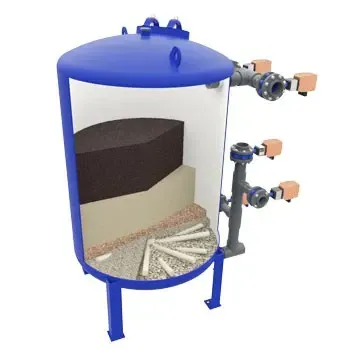
Understanding Hard Water
Hard water contains high levels of primarily calcium and magnesium. These minerals can cause various issues in your home, including scale buildup in pipes, fixtures, and appliances which can cause damage or at the least lessen the effectiveness that clean water affords. Water softeners and conditioners offer different methods for mitigating these effects.
Water Softeners: The Traditional Solution
Water softeners are designed to remove the minerals that cause water hardness through a process known as ion exchange. In this process:
- Ion Exchange: Water passes through a tank filled with resin beads that are coated with sodium ions. The beads attract and hold onto the calcium and magnesium ions, effectively removing them from the water. In exchange, sodium ions are released into the water.
- Regeneration: Periodically, the system flushes the collected minerals from the resin beads using a brine solution from a separate tank, recharging the beads with sodium ions.
- Other Water Treatments: There are a multitude of other water treatment systems that can be effective against calcite build up without the use of a salt-based system. Check with your professional plumber to get to know these alterative products!
Benefits of Water Softeners
- Removal of Hardness Minerals: Offers a comprehensive solution to hard water by physically removing calcium and magnesium.
- Prevents Scale Buildup: By removing hardness minerals, water softeners prevent scale from forming in pipes and appliances, extending their lifespan.
- Improves Soap Efficiency: Soft water allows soaps and detergents to lather more effectively, reducing the amount needed for cleaning.
How Reverse Osmosis Works
Reverse osmosis systems force water through a semi-permeable membrane with pores small enough to block contaminants but allow water molecules to pass through. The process involves several stages:
- Pre-filtration: Water first passes through one or more filters to remove large particles and sediments.
- Reverse Osmosis: The filtered water is then pushed through the RO membrane, where the majority of dissolved solids and contaminants are removed.
- Post-filtration and Storage: Finally, the water flows through a post-filter before entering a storage tank, ready for use.
Benefits of Reverse Osmosis Systems
- Improved Water Quality: RO systems can significantly reduce a wide range of contaminants, ensuring that the water you drink is clean and safe.
- Taste and Odor Improvement: By removing impurities, RO systems also enhance the taste and odor of water, making it more appealing for drinking and cooking.
- Cost-Effective: Investing in an RO system can be more economical over time compared to buying bottled water, with the added convenience of having pure water on tap.
- Environmental Benefits: Reducing reliance on bottled water minimizes plastic waste, contributing to environmental conservation.
- DISCLAIMERS/HEALTH WARNING: Although the water might taste better by using this system, recent scientific data claims that because reverse osmosis water doesn't have enough minerals, when it is consumed, it also leaches minerals from the body. As well, from a water conservation standpoint, generally, the reverse osmosis process takes 4 gallons of water to make one gallon of purified water.
Considerations for Installing RO Systems
- Water Pressure: RO systems require sufficient water pressure to function effectively. Homes with low water pressure may need an additional booster pump.
- Maintenance Requirements: Regular maintenance, including replacing filters and the RO membrane, is crucial for ensuring the system's effectiveness and longevity. Pre-filters typically need changing every 6-12 months, while the RO membrane can last 2-3 years, depending on water usage and quality.
- Wastewater: The RO process produces wastewater, or brine, containing the concentrated contaminants removed from the water. Consideration should be given to the disposal of this wastewater, especially in areas where water conservation is a priority.
- System Location: Most RO systems are installed under the kitchen sink, but whole-house systems are also available. Space and accessibility for maintenance should be considered when choosing the installation location.
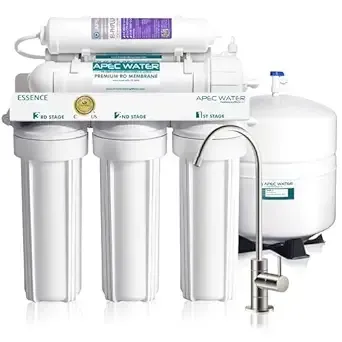

Common Causes of Bad Tasting or Smelling Water
- Chlorine: Used as a disinfectant in municipal water systems, chlorine can leave water with a pool-like taste and smell. While generally safe at low levels, it can be unpleasant.
- Sulfur: A rotten egg smell is often caused by hydrogen sulfide gas, which can occur naturally or from certain bacteria in water heaters or plumbing.
- Metallic Taste: This can be due to the presence of metals like iron, copper, or zinc from pipes or the water supply itself, often indicating corrosion or aging plumbing.
- Organic Compounds: Decaying organic matter can impart musty or earthy tastes and smells. Additionally, certain algae blooms can affect water sources, causing off-flavors.
- Bacterial Growth: Bacteria in the plumbing system or water heater, particularly in systems that have been idle, can produce foul tastes and odors.
Solutions for Improving Water Taste and Smell
- Activated Carbon Filters: Installing activated carbon filters on your taps or using pitcher filters can effectively remove chlorine, organic compounds, and some metals, improving taste and smell.
- Water Softeners: For homes with hard water, installing a water softener can address the metallic taste caused by high mineral content.
The Importance of Water Testing
- Health and Safety: Testing identifies contaminants such as bacteria, heavy metals, chemicals, and other pollutants that can pose health risks.
- Water Quality Management: Results can help manage water softness, pH levels, and the presence of minerals that affect water taste, odor, and compatibility with appliances and fixtures.
- Regulatory Compliance: For private well owners, testing ensures that water quality meets state and federal guidelines for health and safety.
Common Contaminants Detected by Water Testing
- Biological: Bacteria, viruses, and parasites that can cause illnesses.
- Chemical: Pesticides, herbicides, and industrial chemicals that may seep into water supplies.
- Heavy Metals: Lead, mercury, arsenic, and others that can enter water through old plumbing systems or environmental pollution.
- Minerals: High levels of calcium, magnesium (hard water), or other minerals affecting water quality and appliance efficiency.
Types of Water Tests
- Basic Water Test: Typically checks for bacteria, nitrates, pH levels, and total dissolved solids (TDS).
- Comprehensive Water Test: Includes testing for a wide range of contaminants, including heavy metals, chemicals, and additional biological organisms.
- Specialized Tests: Target specific concerns, such as lead, radon, or volatile organic compounds (VOCs), based on known issues in the area or home.
Conducting Water Tests
- DIY Test Kits: Available at home improvement stores, these kits offer a basic assessment for specific contaminants. While convenient, they may not provide comprehensive results and if done incorrectly can result in a false reading.
- Professional Testing Services: Laboratories and water treatment professionals can conduct detailed tests, offering a thorough analysis of your water quality. This is recommended for a comprehensive assessment and accurate results.
